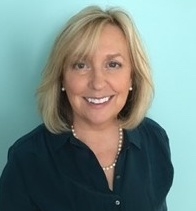Articles and News
The Importance of Understanding Cash Flow | December 14, 2016 (0 comments)

Omaha, NE—Many business owners look to their Income Statement, and judge the health of their business by it. While the Income Statement shows a company’s profitability, it does not tell us about liquidity. Many companies go out of business due to lack of cash and cash flow despite a history of net profits.
A simple cash flow analysis would include adding back to net profits any non-cash expenses, such as depreciation, to net profits. Non-cash expenses include depreciation and amortization. When a piece of equipment is purchased, is when the cash expense is incurred. Depreciation serves to distribute the expense over the life of the equipment. Other non-cash expenses could be asset write-downs, such as bad debt write-offs or inventory adjustments. Goodwill can be tested for value, resulting in impairment charges which are non-cash.
Banks and investors look at EBITDA, or Earnings Before Interest, Taxes, Depreciation and Amortization as a measurement of how much cash a company generates which can be used to repay debts.
A more thorough valuation of cash flow starts with net profits, adds back non-cash items then adds and subtracts balance sheet changes. Increases in assets represent uses of cash, such as new equipment. Decreases in assets represent sources of cash, such as collection of Accounts Receivable or the sale Inventory. Increases in liabilities and equity represent sources of cash, such a new financing. Decreases in liabilities and equity are uses of cash, such as retirement of a bank debt.
Growing companies often run out of cash as inventories and accounts receivable are growing, so watching these Balance Sheet changes is vital for independent business owners who may have limited resources.
For a company with net profits of $50,000, depreciation of $5,000, inventory growth of $100,000 and new Line of Credit financing of $10,000 cash flow differs greatly from profitability. True cash flow, after sources and uses of cash would be $50,000 + $5,000 - $100,000 + $10,000 = ($35,000), very different from the $50,000 net profit that the Income Statement implies.
Another drain on cash flow is owner distributions, or dividends. If an owner wants to build equity, then distributions should be limited to less than net profits. When distributions exceed profits, the company becomes more reliant on liabilities to finance its assets. If the above company decided to distribute out all of its profits, $50,000 then the net cash flow would be ($85,000).
For independent business owner, keep your financial statements up to date and look at both your Income Statement and Balance Sheet to evaluate your cash flow. And remember … Income Statements Measure Profitability while Cash Flow Statements Measure Liquidity.
For help in understanding your financial statements, contact The Edge Retail Academy, (877) 569-8657, ext. 1, or email inquiries@edgeretailacademy.com.
Phyllis Casey brings over 25 years of experience in credit risk management, client relations, business development and global commodity trading. Graduating from Providence College with a major in mathematics and economics, Casey started her career at Fleet National Bank’s Precious Metals Group in Providence, RI. As a senior metals trader, she developed hedging and financing strategies for commercial users of precious and base metals servicing jewelry, electronic, silverware and chemical industries.
After completing commercial credit training, Casey became a business development officer, calling on owners and managers of both private and public companies. She went on to serve as a commercial relationship manager at Sovereign Precious Metals, managing credit, precious metals consignment and hedging facilities for large corporate, middle market, small business and retail companies. Recently, she served as vice president in commercial credit for First Citizens Bank in South Carolina, analyzing financial statements and structuring credit facilities for the bank’s commercial clients. With both a commodity trading and commercial credit background, Casey offers a unique perspective while mentoring Edge Retail Academy’s clients. Contact her at (843) 813-6638 or phyllis@edgeretailacademy.com.







